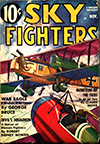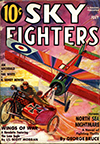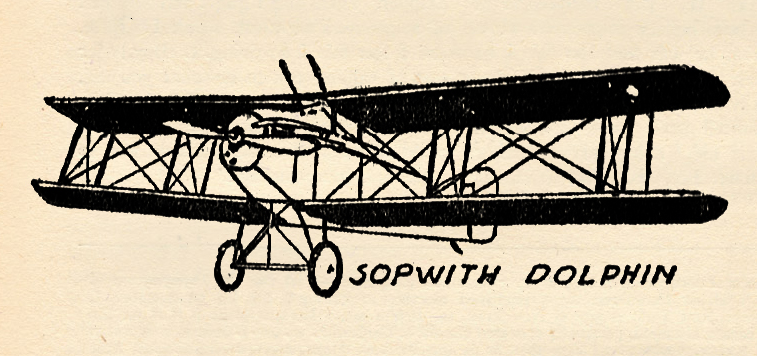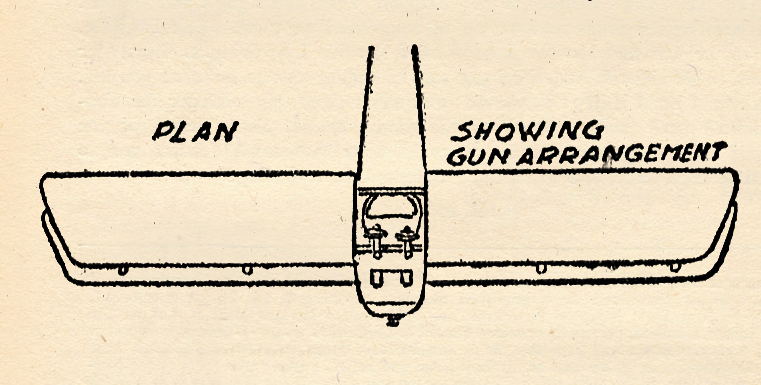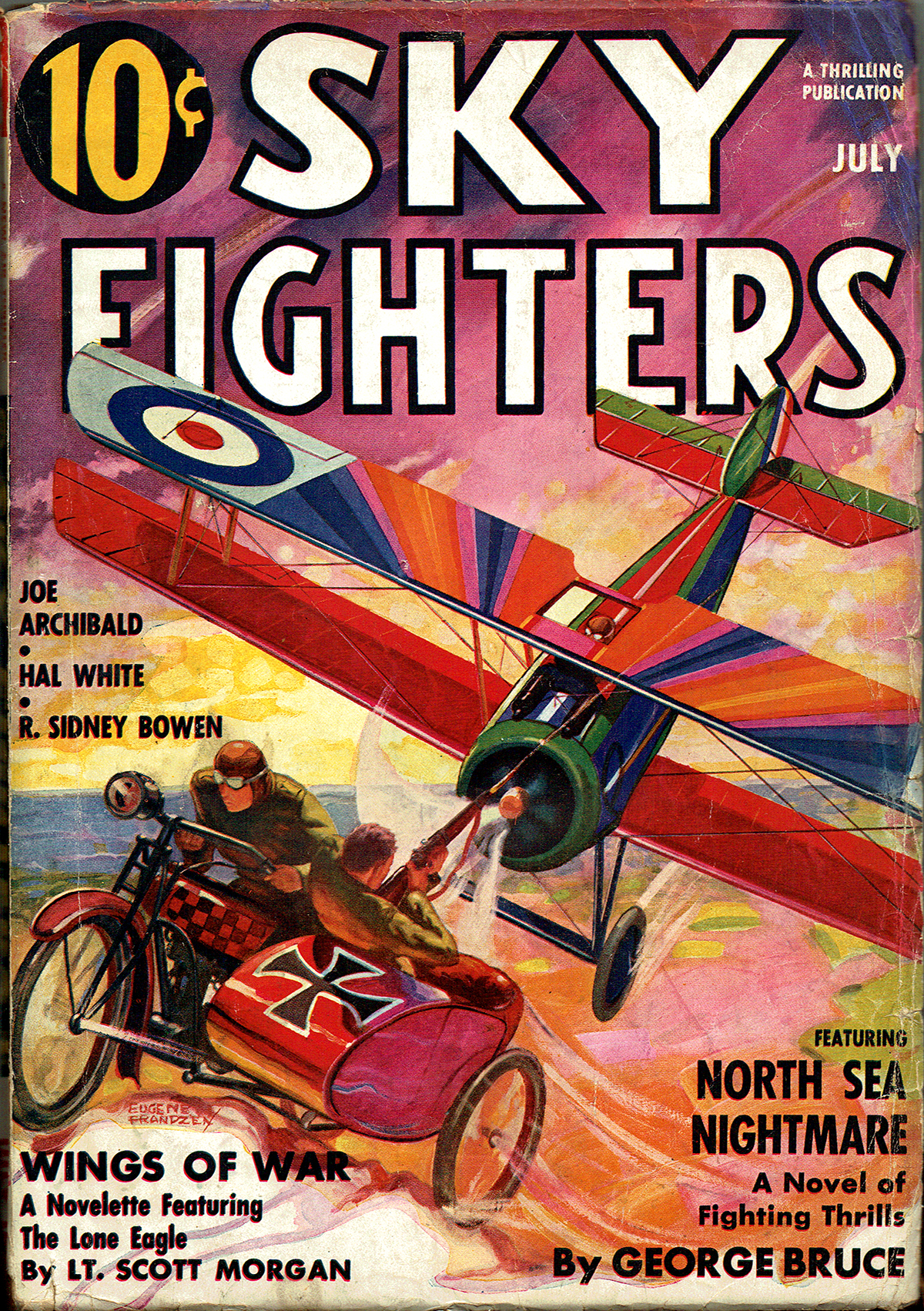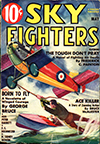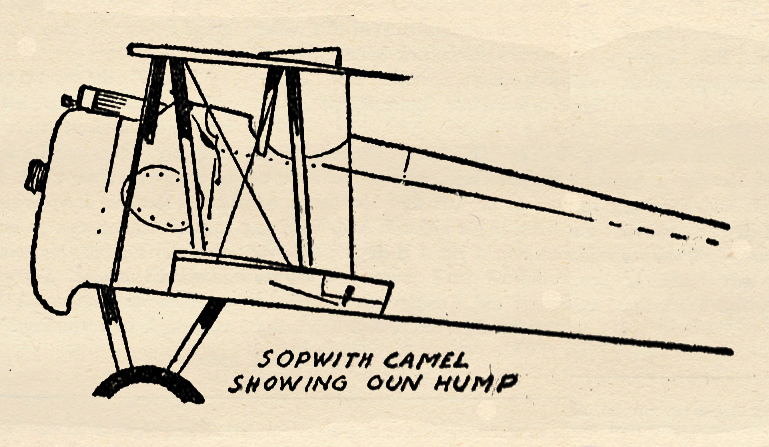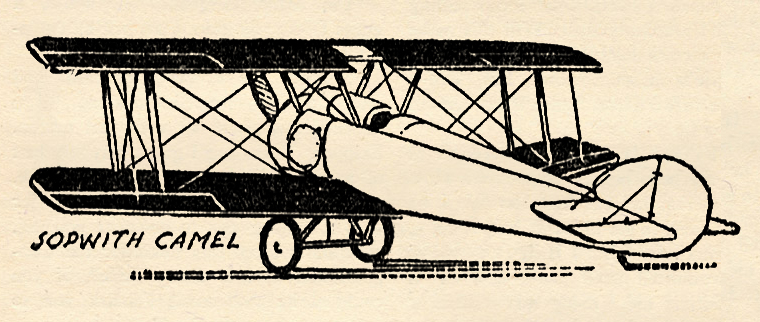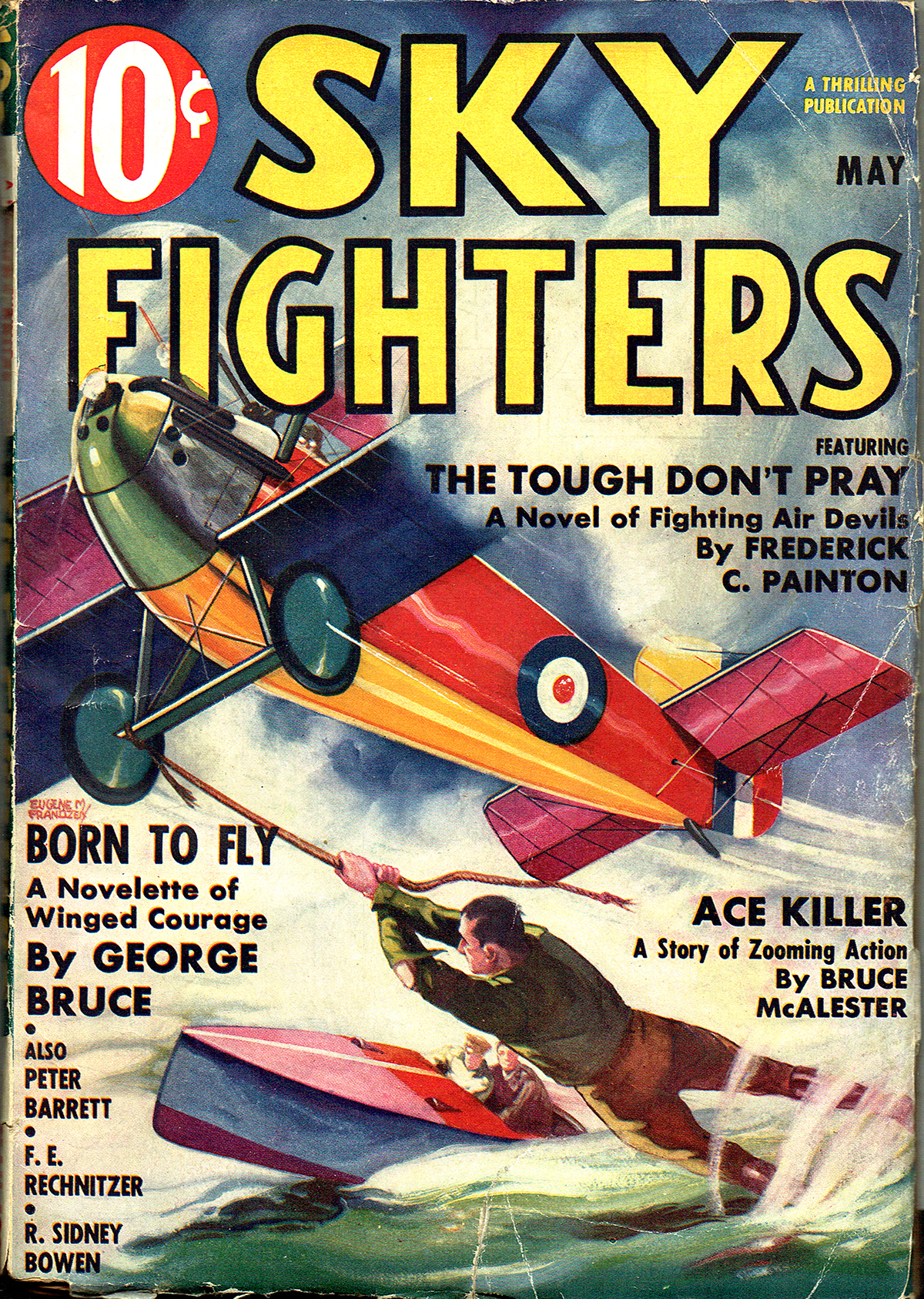Eugene M. Frandzen painted the covers of Sky Fighters from its first issue in 1932 until he moved on from the pulps in 1939. At this point in the run, the covers were about the planes featured on the cover more than the story depicted. On the September 1937 cover, It’s the immortal Fokker D7!
The Ships on the Cover
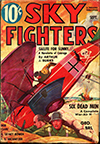 THE one type of plane most talked of when the German air service of World War times is mentioned, is the Fokker. And the outstanding plane of the Fokker line was the D7. Anthony Fokker, a Dutchman, tried to interest the Allies in his early efforts in plane building but met with such stubborn sales resistance that when war clouds formed over Europe and the German government showed it meant real business in buying Fokker planes he took up residence in Germany and promptly started to grind out fighting ships.
THE one type of plane most talked of when the German air service of World War times is mentioned, is the Fokker. And the outstanding plane of the Fokker line was the D7. Anthony Fokker, a Dutchman, tried to interest the Allies in his early efforts in plane building but met with such stubborn sales resistance that when war clouds formed over Europe and the German government showed it meant real business in buying Fokker planes he took up residence in Germany and promptly started to grind out fighting ships.
From the start his planes were outstanding. Those first monoplanes of his were flimsy many-wired braced things but they had stability, a characteristic which was lacking in most other types.
First Synchronized Machine-Gun
It was on an early Fokker monoplane that the first synchronized machine-gun appeared. This gun all but blasted the Allies from the skies.

As time progressed, so did Fokker planes. He switched to biplanes. Out of these came the D7, the most dreaded plane the Allies had to contend with.
It had no interplane bracing wires. The only external bracing wires were a pair crossed under the nose on the undercarriage.
On lack of interstrut bracing there goes an interesting side story. German flyers, on seeing no wires on the Fokker D7, threw up their hands in horror and refused to fly the darned things.
“It can’t be done,†they said even as they saw Fokker himself putting the new D7 through a series of difficult maneuvers.
A Fine Flying Steed
Fokker was not stumped. He yanked the D7s back into his assembly plant and had wire braces installed. Out they came again for tests. The German Aces took them up and gave them the works. They came down grinning with appreciation for a fine steed which could outfly any German ship in the skies. After Fokker had his ship in mass production he yanked the wires off all the D7s and said, “There, without those wires which are just dummies, you’ll get a couple of extra miles per hour.†They believed him and the real Fokker D7 was launched to do more damage to the Allies than any oilier ship.
The Squadron of Death
Another trick construction stunt on the Fokker was the welding in the joints of the fuselage. They did this welding in such a manner that it was real mass production done cheaply. After the joints were welded the frame looked as though it had been in a wreck, it was so out of shape. The welders merely hammered it back into alignment in a few minutes and it was ready for the riggers. It took our own engineers nearly two years after the war was over to find out how the Germans had done the stunt.
Many German squadrons painted their ships gaudy colors, put decorations on them and even pictures. One squadron of Fokker D7s called themselves the Squadron of Death. And on the fuselage of each plane was painted a skull and crossbones. They had such faith in this death dealing ship that they flaunted their gruesome insignia in the faces of the enemy as they drove them out of the sky. But war is a business, and like peacetime business a competitor’s product must be equalled or bettered or you go to the wall. The Allies didn’t intend going to the wall. True, from behind the eight ball things looked bad, but they had arched their backs and in a very few months the Fokker D7 was fighting for its life.
On the cover two Boche pilots tangled with a single Nieuport 28 C.1. Both Fokkers had skull and crossbones insignia on their flat fuselages. But it’s superior ships and superior flying that chalks up the score.

The first Fokker staggered in its tracks as the guns of the Nieuport blasted slugs into it. A puff of black smoke and down it went. The other German pilot stubbornly attacked the Nieuport which proceeded to fly rings around him and chop his ship to pieces. German ground troops fired their rifles up at the wraithlike Nieuport. Then the Fokker gave a sudden lurch, nosed down in a sickening power dive. German ground troops, who had admiringly noted the skull and crossbones, now gasped in horror as the ship went out of control and smashed them into the sides of their own trenches. The Fokker D7 had been equalled!
It had reached its peak. The Allies threw equally fine planes into the skies—but few surpassed the blunt-nosed awkward product of the Dutch inventor, Anthony Fokker.

Sky Fighters, September 1937 by Eugene M. Frandzen
(The Ships on The Cover Page)
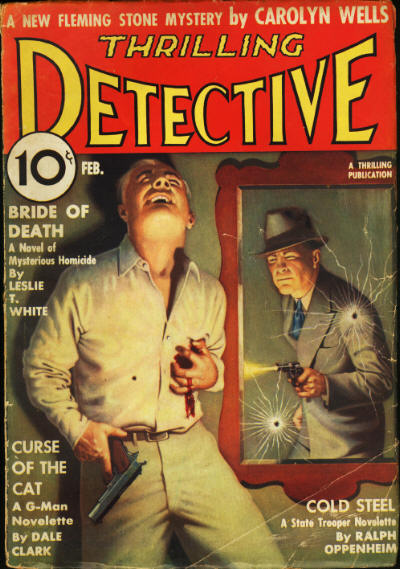 in the pages of Thrilling Detective—the first two in 1936 and 1937 featured Dave Rogers. Dave Rogers was a motorcycle riding state trooper. In this second of the two published tales, a former state trooper, young Bob Hall, has returned to the station as a Federal Agent investigating a counterfeiting ring that is believed to be operating in the area. Rogers says he’s seen one of the three counterfeiters in the area, but is asked to give Hall a wide berth in his investigation. However, when young Bob Hall turns up frozen solid just a short time after Rogers has seen him speeding by on the other side of town, he throws himself into the case!
in the pages of Thrilling Detective—the first two in 1936 and 1937 featured Dave Rogers. Dave Rogers was a motorcycle riding state trooper. In this second of the two published tales, a former state trooper, young Bob Hall, has returned to the station as a Federal Agent investigating a counterfeiting ring that is believed to be operating in the area. Rogers says he’s seen one of the three counterfeiters in the area, but is asked to give Hall a wide berth in his investigation. However, when young Bob Hall turns up frozen solid just a short time after Rogers has seen him speeding by on the other side of town, he throws himself into the case!




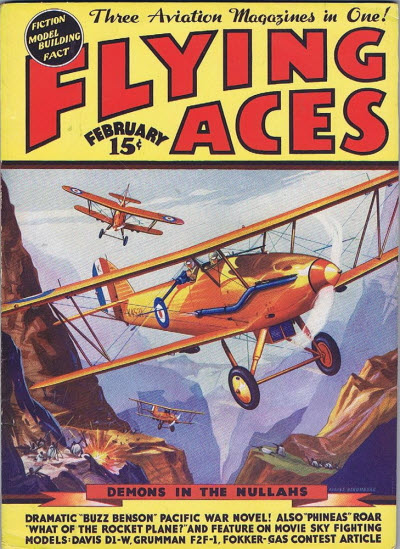 a story by Orlando Rigoni. Rigoni was a very prolific author of western and flying stories appearing in such magazines as Battle Birds, Dare-Devil Aces, Sky Birds, War Birds, Fighting Aces, Sky Fighters, Western Aces, Real Western Round-Up, Thrilling Sports, Air Trails, Western Romances, The Lone Eagle and Flying Acesamong others from roughly 1934 to 1948. He went on to have his stories appear in the slicks; wrote radio and movie scripts; write numerous western novels; and gothic romance novels using the pseudonym “Leslie Aimes.”
a story by Orlando Rigoni. Rigoni was a very prolific author of western and flying stories appearing in such magazines as Battle Birds, Dare-Devil Aces, Sky Birds, War Birds, Fighting Aces, Sky Fighters, Western Aces, Real Western Round-Up, Thrilling Sports, Air Trails, Western Romances, The Lone Eagle and Flying Acesamong others from roughly 1934 to 1948. He went on to have his stories appear in the slicks; wrote radio and movie scripts; write numerous western novels; and gothic romance novels using the pseudonym “Leslie Aimes.”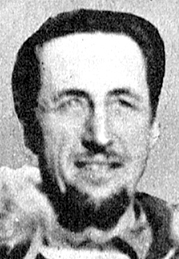 ORLANDO RIGONI, author of “I Want to Know Why” in this issue, appears at the left in a photograph taken in the Yukon last winter while he was working on the Alcan Highway, which, as you doubtless know, is the new road through Canada connecting the United States and Alaska. He is a writer by trade and was working on the road to get material for a novel for young people.
ORLANDO RIGONI, author of “I Want to Know Why” in this issue, appears at the left in a photograph taken in the Yukon last winter while he was working on the Alcan Highway, which, as you doubtless know, is the new road through Canada connecting the United States and Alaska. He is a writer by trade and was working on the road to get material for a novel for young people.
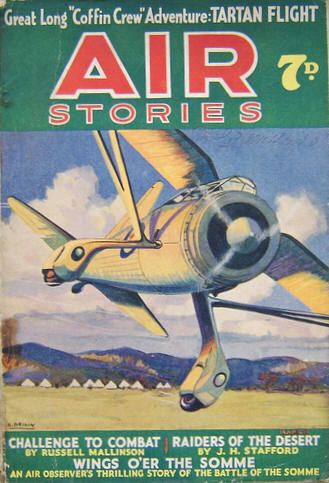 the Christmas Season with The Coffin Crew! Yes, Arch Whitehouse’s hell-raising Handley Page bomber crew! Piloting the bus is the mad Englishman, Lieutenant Graham Townsend, with the equally mad Canadian Lieutenant Phil Armitage serving as reserve pilot and bombing officer with Private Andy McGregor, still wearing his Black Watch kilts, rounding out the front end crew in the forward gun turret. And don’t forget the silent fighting Irishman Sergeant Michael Ryan, usually dragging on his short clay pipe while working over the toggle board dropping the bombs with Alfred Tate and crazy Australian Andy Marks or Horsey Horlick manning the rear gun turret.
the Christmas Season with The Coffin Crew! Yes, Arch Whitehouse’s hell-raising Handley Page bomber crew! Piloting the bus is the mad Englishman, Lieutenant Graham Townsend, with the equally mad Canadian Lieutenant Phil Armitage serving as reserve pilot and bombing officer with Private Andy McGregor, still wearing his Black Watch kilts, rounding out the front end crew in the forward gun turret. And don’t forget the silent fighting Irishman Sergeant Michael Ryan, usually dragging on his short clay pipe while working over the toggle board dropping the bombs with Alfred Tate and crazy Australian Andy Marks or Horsey Horlick manning the rear gun turret.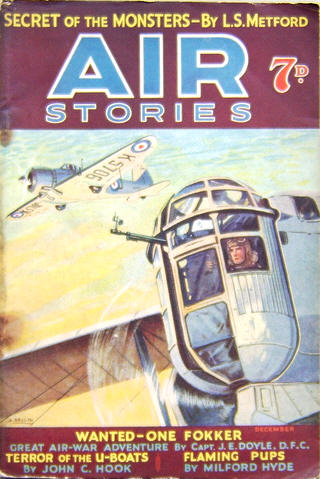 a story from the pen of British Ace,
a story from the pen of British Ace, 
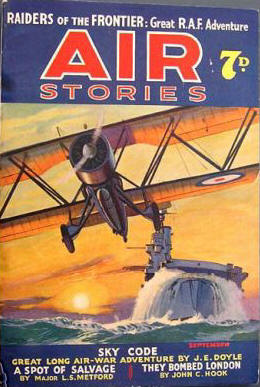 a story from the pen of British Ace,
a story from the pen of British Ace, 

